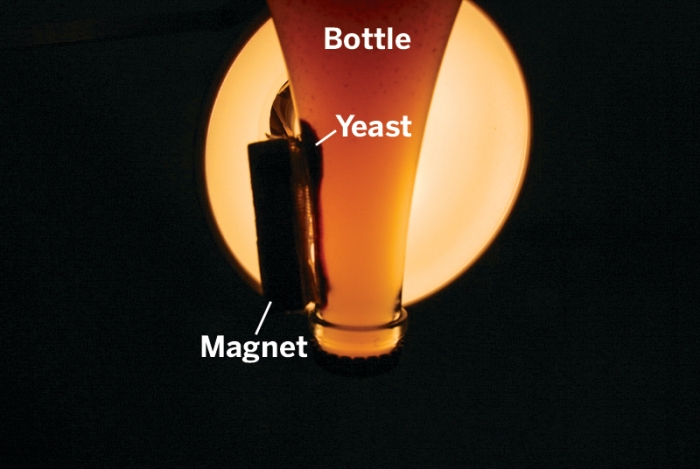Advertisement
Grab your lab coat. Let's get started
Welcome!
Welcome!
Create an account below to get 6 C&EN articles per month, receive newsletters and more - all free.
It seems this is your first time logging in online. Please enter the following information to continue.
As an ACS member you automatically get access to this site. All we need is few more details to create your reading experience.
Not you? Sign in with a different account.
Not you? Sign in with a different account.
ERROR 1
ERROR 1
ERROR 2
ERROR 2
ERROR 2
ERROR 2
ERROR 2
Password and Confirm password must match.
If you have an ACS member number, please enter it here so we can link this account to your membership. (optional)
ERROR 2
ACS values your privacy. By submitting your information, you are gaining access to C&EN and subscribing to our weekly newsletter. We use the information you provide to make your reading experience better, and we will never sell your data to third party members.
Analytical Chemistry
Newscripts
Robosquirrel Versus Rattlesnake, Inefficient Balloon Popping
by Lauren K. Wolf
April 23, 2012
| A version of this story appeared in
Volume 90, Issue 17
First, there was “Mothra vs. Godzilla.” Then Alien took on Predator. Now, thanks to a team of researchers in California, another epic battle will play out between creatures worthy of a sci-fi film: Robosquirrel will square off against rattlesnake.

But instead of coming to a theater near you, this real-world face-off will take place in the rugged terrain outside San Jose. And the results will eventually appear in a scientific journal.
Researchers have been studying the predator-prey relationship between rattlesnakes and ground squirrels for decades. They’ve known that the rattlesnake diet consists mainly of ground squirrel pups and that when adult ground squirrels approach rattlesnakes, the furry rodents wag, or flag, their tails from side to side.
In 2007, a team of scientists observed that not only do the squirrels flag their tails at the snakes, but they also increase the temperature of their tails during the confrontation (Proc. Natl. Acad. Sci. USA, DOI: 10.1073/pnas.0702599104). The reason for this complex behavior, however, is still unknown.
That’s where robosquirrel comes in.
To study animal communication with an experimental approach, “you have to have a playback design,” says Rulon W. Clark, a member of the California research team and expert on snake behavior. Playback design, he tells Newscripts, means having an animal signal that scientists can duplicate and manipulate. Robosquirrel provides a way of having that controllable signal, says Clark, who is a biologist at San Diego State University.
Clark and the rest of the team hope to use their robotic squirrel—a taxidermied outer shell with a motorized, heatable tail—to figure out the exact reason for a squirrel’s tail-flag signal.
They chronicled the development of robosquirrel and some preliminary field results in a late-2011 article in IEEE Robotics & Automation Magazine (DOI: 10.1109/MRA.2011.942121). So far, it seems that squirrels are heating and flagging their tails to warn the snakes that they’ve been seen and that their chances of ambushing the rodents are slim, the researchers say. “Rattlesnakes are one of the few organisms out there that can ‘see’ infrared light” with sensory organs on their noses, Clark says. So the reptiles can certainly detect the squirrels’ heated tails.
But, Clark adds, “we’ll need several more seasons in the field until we have enough data” to say for sure and publish. The researchers will head back out into rattlesnake territory to make some more observations in late May.
Speaking of epic battles, several teams of college students recently gathered at Purdue University to duke it out in the 25th annual Rube Goldberg Machine Contest. This year, the students were asked to build a device that takes at least 20 steps to pop a balloon in less than two minutes.

Typically, popping a balloon requires one step—insert pin into balloon—but the competition rewards engineering inefficiency, as well as creativity. So these devices, inspired by the whimsical contraptions dreamt up by Pulitzer Prize-winning cartoonist Rube Goldberg, include parts such as pulleys, levers, and lasers for completing a simple task.
Taking 191 steps to pop its balloon, the winning machine this year was built by a team at St. Olaf College, in Minnesota. Team cocaptain and chemistry-physics double major Justine N. Tawel tells Newscripts that the theme of St. Olaf’s device was the cataclysmic end of the world in 2012, as predicted by the Mayan calendar.
During the machine’s final step, a laser switches on to pop a balloon that looks like Earth. “That’s one of my favorite steps because I set up the laser,” Tawel says.





Join the conversation
Contact the reporter
Submit a Letter to the Editor for publication
Engage with us on Twitter